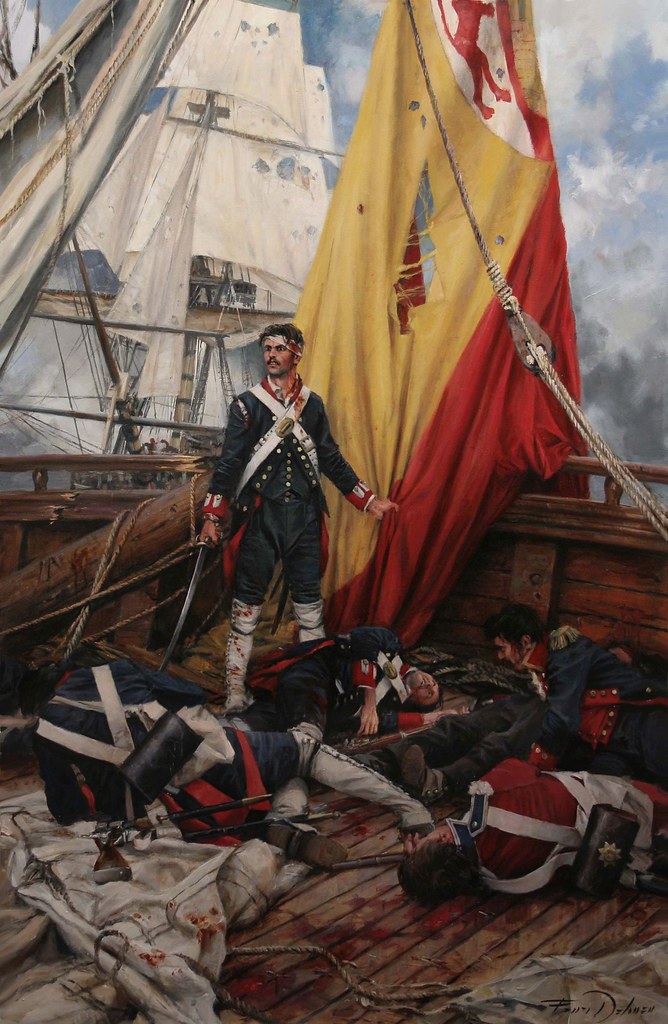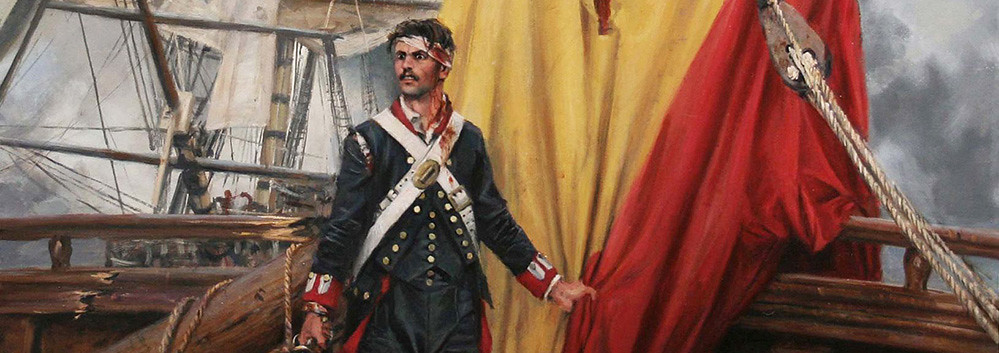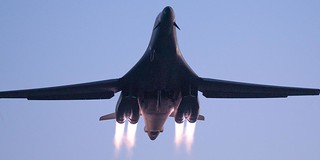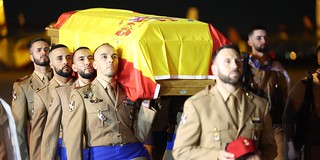Martín Álvarez: the Spanish marine whose courage caused admiration in his enemies
It happened on February 14, 1797, and his feat is preserved as one of the most glorious episodes in the very long military history of Spain.
A carter from Extremadura who ended up being a grenadier in the Marine Infantry
Martín Álvarez Galán was born in Montemolín, a small town in Badajoz, in 1766. He was the only son of a very humble family. Pedro, his father, was a carter, and Benita, his mother, was the daughter of a soldier who lost his arm in the Siege of Badajoz in 1705. It was his mother's stories about his grandfather's experiences that awakened the Martín's military vocation. After the death of his father, Martín inherited his job as a carter, but after the death of his mother, the young man from Extremadura decided to commit to the other family tradition, the military one., enlisting in the cavalry.
Martín was 24 years old when he left Montemolín heading to Seville, where he met Lucas, a grenadier of the Marine Infantry, who was the one who convinced him to enlist in that corps. On April 26, 1790, Martín joined the 3rd Company of the 9th Marine Battalion. Due to his good aptitudes, he was selected for the elite of the Marine Corps: the grenadiers , who were always in the vanguard, making way for others.
The Battle of Cape St. Vincent
When he was 26 years old, Martín embarked on the ship "Gallardo". Aboard it he participated in the Sardinian campaign between 1793 and 1794.Next, our young grenadier embarked on the "San Carlos", leaving for Havana. Martín's service on the ships of the Spanish Navy continued in 1796 on the "Santa Ana" and the "Príncipe de Asturias", two ships with 112 guns each. He finally arrived at the ship with which he would pass on to posterity: on February 1, 1797, Martín embarked on the "San Nicolás de Bari", with 74 guns.
In October 1796, after the signing of the Treaty of San Ildefonso with France, Spain declared war on England and Portugal. Barely two weeks after embarking on its new destination, the "San Nicolás de Bari" arrived in the waters of Cape Saint Vincent, accompanying 23 other ships, 7 frigates and several other ships. On February 14, 1797, the Spanish squadron was intercepted by a British one inferior in number. Despite being an unequal fight, the British Horatio Nelson managed to defeat the Spanish squadron, capturing the "San Nicolás of Bari" and four other ships.
The bloody combat in which Martín clung to the Flag of Spain
The "San Nicolás de Bari" was dismasted and boarded by the HMS Captain, with 74 guns and captained by Nelson himself. It was a brutal fight, in which the ship was taken not without great efforts, since what remained of the Spanish crew made the determination to fight to the death. Before falling in combat, Brigadier Tomás Geraldino entrusted Martín with the mission of defending the flag. Cornered towards the stern castle, the Marines fell one by one.
Finally only Martín remained. He defended himself like a lion, sword in hand and clinging to the reddish flag still raised , since lowering it would have meant sending the enemy a signal of surrender. A sergeant of the British marines, William Morris, armed with a saber and a pistol and who intended to lower the red flag, approached Martín and ignored the Spanish grenadier's stop signal to stop. Martín pierced him with such force that he left him nailed to a bulkhead with his saber. After that action, unable to recover his saber, Martín grabbed a rifle trying to kill an officer and several British soldiers with rifle butts. They rushed against him. Finally, the Spanish grenadier was shot dead by the English marines.
Nelson, moved by the courage of the Spanish grenadier
When the time came to collect the dead, Nelson, who had contemplated Martin's heroic action, ordered his body to be wrapped with the flag for which he had shed his blood, and ordered that it be thrown into the sea with all honors. But upon picking him up, the British discovered that Martín is still alive. he was treated and later disembarked with the other prisoners in Lagos, Portugal.
Martín Álvarez's brave response to a general in a court martial
Once back in Spain, Martín was called to testify at the court martial held against the officers responsible for that humiliating defeat. There General Núñez Gaona asked him: "Was he on the ship 'San Nicolás de Bari' when this ship surrendered to the English?" Martín denied it. Asked by the general if he was not on board that ship, Martín responded affirmatively. "So, why do you deny having been in the 'San Nicolás de Bari' on the occasion of surrendering to the English?", the general asked him, to which Martín replied: "Because the 'San Nicolás de Bari' did not surrender, but was boarded and taken with blood and fire."
Martín Álvarez was recognized for the courage demonstrated in that battle, which the English even testified to in the report written about those events. He was promoted to corporal and shortly after first corporal. Later, the King granted him a lifetime pension of four escudos per month. He died in 1801, at the age of 35, as a result of an accident suffered during a watch aboard the ship "Concepción".
Today the Spanish Navy honors Martín as one of its heroes. In the Naval Museum of London, the saber with which the Spanish grenadier defended his flag is still preserved, with great respect. In Montemolín, his hometown, a monument was dedicated to him, and the Catalan painter In 2014, Augusto Ferrer-Dalmau dedicated to him the magnificent painting that accompanies these lines, titled "Mi Bandera" (My flag), in which we see Martín in his heroic feat in the Battle of Cape San Vicente. The painting is preserved in the Tercio de Armada in Cádiz.

|
Don't miss the news and content that interest you. Receive the free daily newsletter in your email: |
- Most read
- The brutal 'touch and go' of a Lufthansa Boeing 747 at Los Angeles Airport
- US F-35A fighters flying with Polish F-16s over Poland at a time of great tension
- A Spanish pilot shows one of the C-295M of the 353 Special Operations Squadron
- An American airman used a Flag of Spain to direct a B-1B Lancer bomber
- Eurofighter vs F-35: the opinions of professional pilots on these advanced fighters
- The firearms used by the Pontifical Swiss Guard, the smallest army in the world
- The massive takeoff of more than half of the United States B-2 Spirit stealth bombers

 ES
ES







Opina sobre esta entrada: